Visiting St Peter’s Basilica was something I almost didn’t do.
After spending the morning exploring the Vatican Museums I very much had information fatigue and wasn’t sure I could take any more in. But it was my last full day in Rome which meant it was the only time I had left to see Vatican City—and as I had booked a tour, I soldiered on.
What was once the Circus of Nero and a cemetery, is now the site where St Peter’s Basilica stands—so it’s fair to say it has changed just a tad since then! The construction took a while, starting in 319 AD and being completed around 30 years later in 349 AD. But it’s understandable why it took so long when you consider that they had to move a million tonnes of earth in order to create the platform to support St Peter’s Basilica. The original basilica stood for over 1,000 years but after showing signs of deterioration, it was concluded that it was beyond repair and due to serious concerns that it may collapse, was demolished.
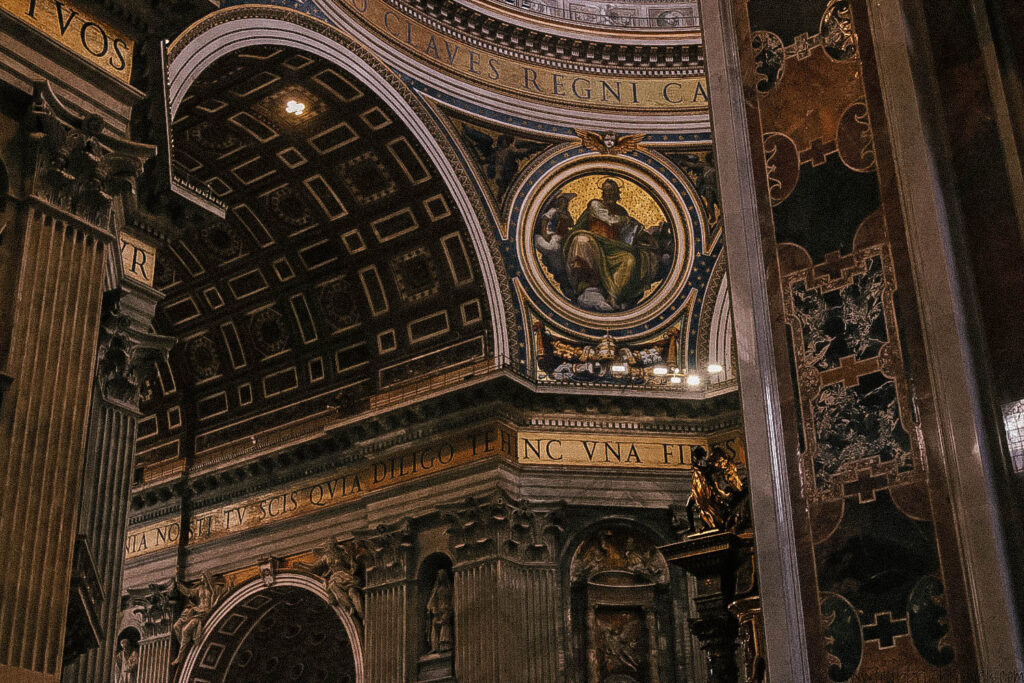
St Peter’s Basilica 2.0 took a little bit longer to build—90 years longer than the original version, to be precise. But the 120 years it took to build were worth it because they were able to get all of the great architects of the Roman Renaissance and Baroque involved.
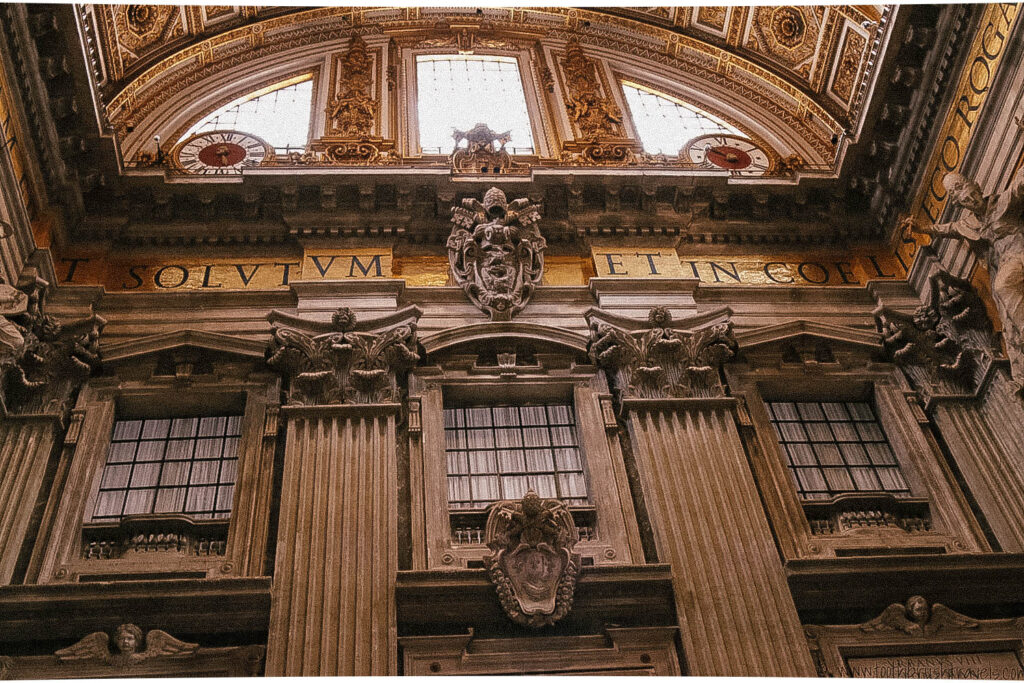
Architects which included Bramante (who produced the original design for St Peter’s Basilica back in 1506), Raphael (who took over when Bramante died in 1514), Michelangelo (who took over when Raphael died in 1520) and Michelangelo’s pupil, Giacomo Della Porta (who continued building St Peter’s Basilica after Michelangelo’s death in 1564).
The church was later extended by Carlo Maderno at the request of Pope Paul V, and everyone’s hard work paid off when on the 18th of November 1626, St Peter’s Basilica was officially completed and consecrated by Pope Urban VIII.

It was 2018 when I stepped foot into St Peter’s Basilica, and from the moment I did I felt tiny. It was one of those places where your neck does a full rotation as your eyes dart from edge to edge.
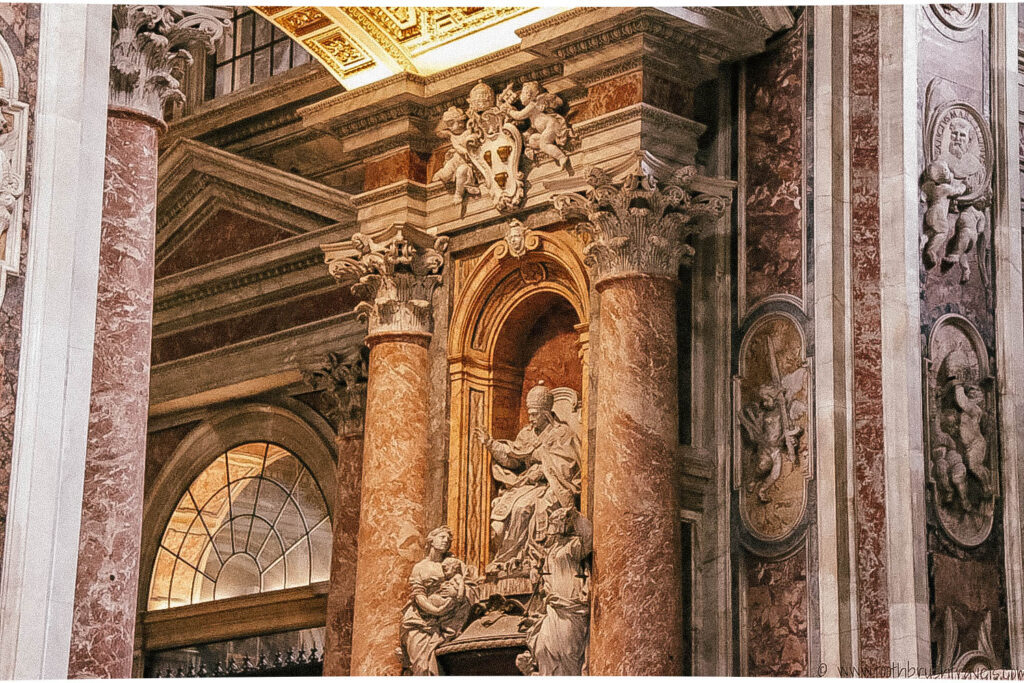
St Peter’s Basilica is by no means small. Covering 22,300 square meters in the UNESCO world heritage site of Vatican City, it is one of the world’s largest churches and can hold 60,000 people—and I got to be one of them.
Everywhere you turn there is something to look at, from the curved lines, to the ornate detailing, to the show-stopping statues—it’s a serious workout for both your neck and eyes!
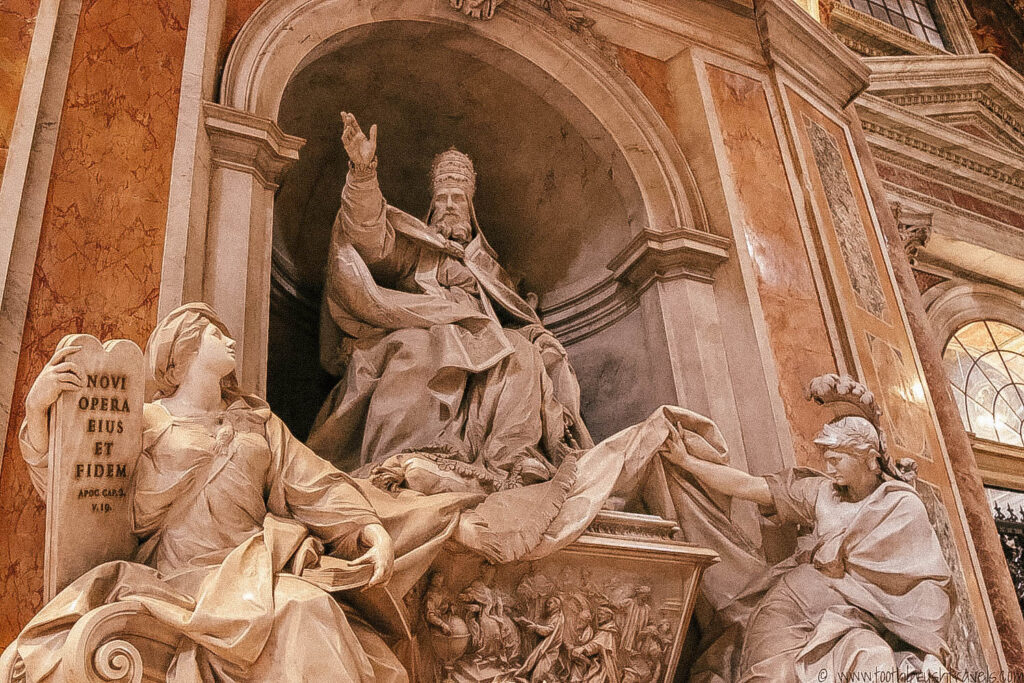
But, it’s a workout that’s worth doing because holy smokes, the place is a beauty.
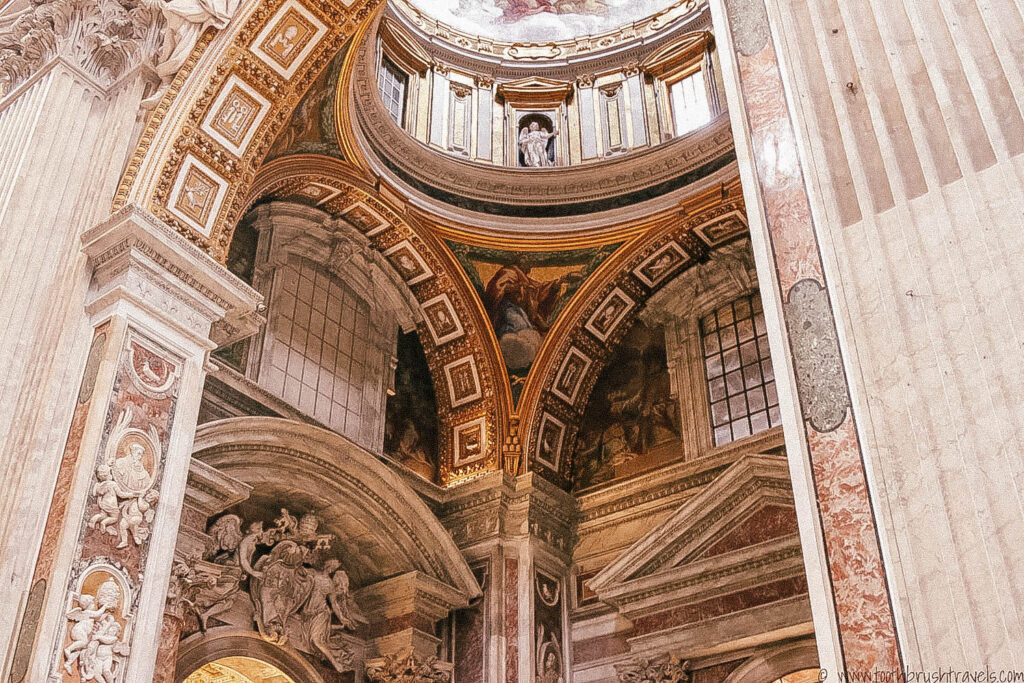
One of the parts which stood out the most to me was St. Peter’s Baldachin, a bronze canopy which stands 29m high. I tried to take a touristy photo in front of it, but I never travel with wide lenses and with it being 29m tall, I couldn’t fit it all in. So here’s a picture of me looking super awkward instead.
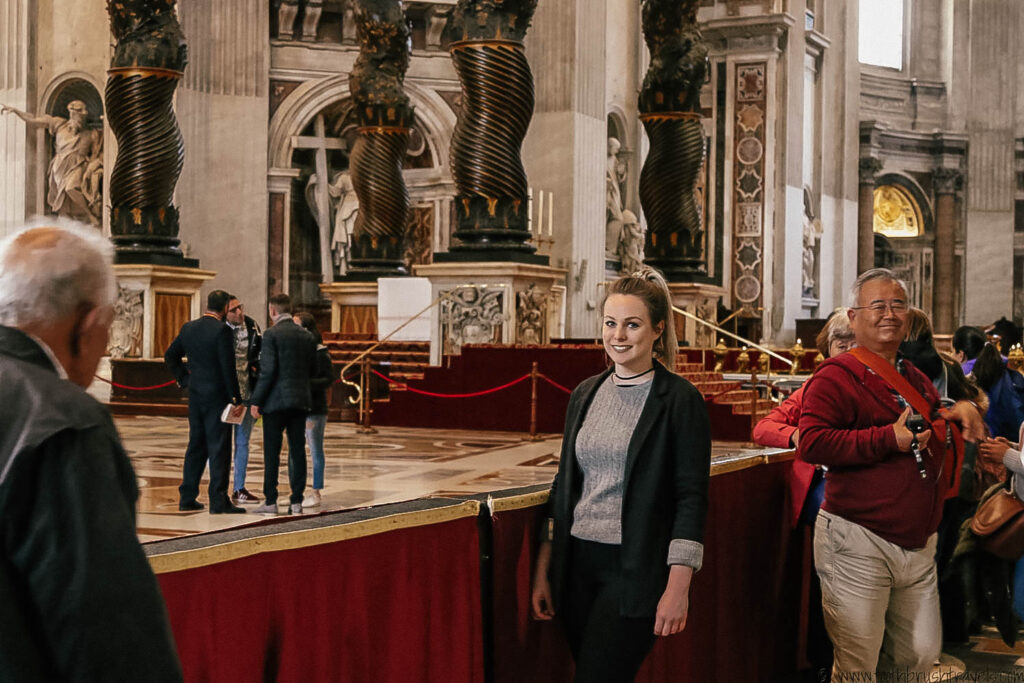
#NailedIt.
I carried on wandering around, taking everything in before deciding to head off and continue on with my quest to find Rome’s best gelato. There is an option to climb the 491 stairs in St Peter’s Basilica to get to the top of Michelangelo’s dome, otherwise known as St Peter’s Dome. But I skipped this because I was suffering from a plantar fasciitis flare up and my feet were killing me. Not even the lure of a lift could persuade me. But if you want to see views across Rome’s skyline where the journey up is decorated in beautiful mosaics, then you should definitely do it—travel regret is a real thing, so it makes sense to see everything while you can!

So, what are the top 5 things to do inside St Peter’s Basilica?
#1: Take A Tour
Famous for being the final resting place of St Peter, one of ol’ Jesus’ past apostles, St Peter’s Basilica is steeped in history—and a tour is one of the best ways to learn about it! Entrance to St Peter’s Basilica is free, but if you want to get your learning on, you’ll need to fork over a few euros. There are various options which you can find here.
#2: Climb The Cupola
Designed by Michelangelo (but finished after his death), St Peter’s Dome is the tallest in the world with a height of 136.57 metres—and for just €6, you can climb to the top of it. (Or if you’re feeling less inclined to take the stairs, you can take a lift to the first floor for €8!).
On the way to the top, you’ll see intricate mosaics line the ceilings and walls, and you’ll be able to walk around the inside of the dome using the circular gallery which surrounds it. It provides quite the view! Something that’s further maximised when you go up some narrow stairs and outside where you’ll find views of the nave below.
#3: Admire St. Peter’s Baldachin.
Sitting directly beneath the dome in St Peter’s Basilica is St. Peter’s Baldachin, a bronze canopy which stands a whopping 29m high. Work was started on it in 1623 by Gian Lorenzo Bernini and 11 years later (1634) it was completed. St. Peter’s Baldachin is situated directly above St. Peter’s Tomb and stands over the papal altar, an alter that only the Pope may serve at.
#4: Peek at Pietà
Several renowned Renaissance artists helped to shape the Basilica. Bramante, Peruzzi, Raphael and Sangallo to name a few. But it was Michelangelo who unified their creative visions and left behind a legacy with his Renaissance sculpture, Pietà.
Carved out of a single piece of Carrera marble that he chose himself from a Tuscan quarry, the sculpture depicts the Madonna holding Jesus’ body just minutes after he was taken down from the cross. It’s currently sat behind bulletproof glass due to Lazslo Toth’s infamous attack on the sculpture, which saw the Madonna’s nose broken in three parts, her left arm and hand smashed off, and 100 other fragments, in May of 1972.
#5: Tour The Scavi
Situated underneath St Peter’s Basilica is the Vatican Necropolis, also known as the Scavi. Dating back to the fourth century, these tombs of the dead are a burial ground which is believed to be the location of St Peter’s tomb, in addition to Emperor Constantine, fountains, buildings and even a bit of graffiti which says “peter is here” lol.
Proof that it wasn’t just 90’s kids writing on school desks to let people know they were here.
Due to the delicate nature of the tombs, tickets sales are limited. Only 250 people are allowed to see the protected site each day, running in intimate groups of 12. So if it’s something you’d like to do, you’ll need to prepare well in advance!
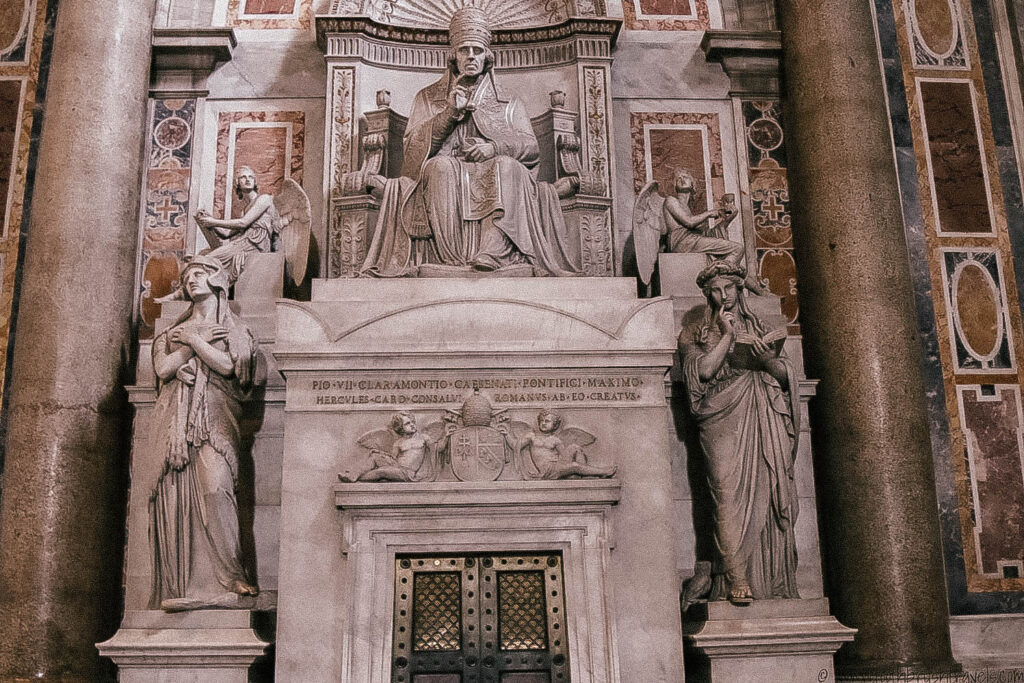
Tips for Visiting St Peter’s Basilica
Dress appropriately
Even if you don’t practice religion yourself, this is still a holy site and the customs of others should be respected. This means shoulders, knees and cleavage shouldn’t be exposed.
Bring cash
Entrance to St Peter’s Basilica is free, but you’ll need some euros if you’re looking to take an audio tour or visit the cupola.
Skip the queues
There’s nothing worse than being stuck behind 100’s of other people all wanting to do the exact same thing, so get yourself a ticket and skip the queues! I bought my pass from City Wonders, which was part of the Vatican Museum tour ticket and enabled me to bypass the crowds and go straight in. But if you’re visiting last minute then it’s worth getting there as early as possible to avoid everyone! St Peter’s Basilica opens at 7am, the dome opens at 8am and the museums open at 9am—so with enough preparation, the timings work out perfectly!
